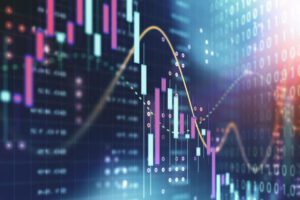Welcome to our article on Cardano price prediction for the year 2030. As avid followers of the cryptocurrency market, we understand the curiosity surrounding the future of Cardano and its potential for growth. In this article, we will delve into the factors that could influence the price of Cardano in the next decade, providing you with valuable insights and predictions.
Cardano, often referred to as ADA, is a blockchain platform that aims to provide a secure and scalable infrastructure for the development of decentralized applications. With its unique approach to governance and sustainability, Cardano has gained significant attention in the crypto community. As we look ahead to 2030, it’s important to consider the key drivers that could impact the price of ADA and shape its future trajectory.
In this article, we will explore various factors such as technological advancements, market trends, and regulatory developments that could influence the Cardano ecosystem. By analyzing these factors, we will provide you with a well-informed Cardano price prediction for the year 2030. So, let’s dive in and uncover the potential future of Cardano in the next decade.
Technological Advancements in Cardano
Technological Advancements in Cardano
Cardano, being one of the leading cryptocurrencies, has been continuously focused on technological advancements to improve its capabilities and potential. In this section, we will delve deeper into the key technological advancements that could impact the price of Cardano in the year 2030.
- Ouroboros Proof-of-Stake (PoS) Protocol:
Cardano utilizes the Ouroboros PoS protocol, which is a unique and innovative approach to consensus algorithms. Unlike traditional Proof-of-Work (PoW) systems that require significant computational resources, Cardano’s PoS protocol offers a more energy-efficient and secure alternative. This technological advancement brings scalability and sustainability to the Cardano network, attracting more investors and users in the long run.
- Layered Blockchain Architecture:
Cardano’s layered blockchain architecture, consisting of two layers, namely the settlement layer and the computation layer, provides scalability, interoperability, and enhanced security. The separation of transaction settlement from smart contract execution allows for efficient processing and future upgradability. With this architectural design, Cardano stands out as a promising blockchain platform for a wide range of applications, attracting developers and stakeholders, thus positively influencing its price.
- Smart Contract Capabilities:
Cardano’s ability to support smart contracts is another significant technological advancement. While Ethereum has been a market leader in this domain, Cardano aims to provide a more secure and reliable smart contract platform through formal verification. By ensuring the correctness of the code, Cardano minimizes the risk of bugs and vulnerabilities, making it an attractive choice for developers and businesses. The introduction of smart contracts increases the utility and adoption of Cardano, ultimately impacting its price positively.
With these technological advancements in Cardano, we can expect an increase in investor confidence, utilization, and overall market value. However, it’s important to note that the cryptocurrency market is highly speculative and influenced by many factors. Therefore, while these advancements have the potential to drive the price of Cardano to new heights, it’s crucial to consider other market trends, regulatory developments, and investor sentiment when making price predictions.
Stay tuned for the upcoming sections, where we will explore other factors that could shape the outlook for Cardano in the year 2030.
Market Trends and Demand for Cardano
When it comes to predicting the future price of any cryptocurrency, including Cardano, considering market trends and demand is crucial. The market trends can provide insights into the overall sentiment and behavior of investors, while demand reflects the interest and adoption of the cryptocurrency by users and businesses.
Market Trends
Analyzing market trends allows us to understand the broader crypto market dynamics and how they can influence the price of Cardano in the year 2030. Here are some key trends to consider:
- Increased Institutional Adoption: Institutional investors, such as hedge funds and asset managers, are gradually recognizing the potential of cryptocurrencies as a valuable asset class. This trend could contribute to the overall demand and price appreciation of Cardano.
- Growing Retail Interest: With the increasing accessibility of cryptocurrencies through various platforms, more retail investors are entering the space. Retail interest in Cardano could accelerate its growth as a viable investment option.
Demand for Cardano
The demand for Cardano is driven by its unique value proposition and the practical applications it offers. Here are some factors indicating the potential demand for Cardano in the future:
- Scalability and Sustainability: Cardano’s layered blockchain architecture and Ouroboros Proof-of-Stake protocol enable scalability and sustainability, making it an attractive choice for businesses seeking efficient and eco-friendly blockchain solutions.
- Interoperability: Cardano aims to establish seamless interoperability between different blockchain networks, allowing for the easy transfer of assets and data. This feature could significantly increase the demand for Cardano as a preferred platform for cross-chain transactions.
- Smart Contract Capabilities: Cardano’s smart contract functionality opens up a wide range of possibilities for developers to build decentralized applications (dApps) and automate various business processes. The demand for Cardano would likely grow as more dApps and projects are developed on its platform.
While these market trends and demand factors could have a positive impact on the price of Cardano in 2030, it’s important to note that cryptocurrency prices are subject to various external factors and uncertainties, such as regulatory developments, technological advancements, and investor sentiment. Therefore, it’s crucial to consider these additional factors when making specific price predictions.
In the next sections, we will explore other significant factors that could shape the future of Cardano and potentially impact its price in the year 2030. Stay tuned for more insightful analysis and predictions.
Regulatory Developments in the Cryptocurrency Industry
The cryptocurrency industry is constantly evolving, and regulatory developments play a significant role in shaping its future. As we look ahead to 2030 and assess the potential price of Cardano, it’s essential to consider the impact of regulatory frameworks.
Increased Regulatory Clarity
One key factor that could potentially influence the price of Cardano is increased regulatory clarity. As governments around the world continue to address the challenges and opportunities presented by cryptocurrencies, clearer regulations are likely to emerge.
Clearer regulations provide a sense of stability and legitimacy to the cryptocurrency market, making it more appealing to investors and businesses alike. The greater the regulatory clarity, the higher the chances of widespread adoption of cryptocurrencies like Cardano.
Positive Regulatory Frameworks
The establishment of positive regulatory frameworks can also have a significant impact on the price of Cardano. A regulatory environment that provides support and fosters innovation can attract more investors, developers, and businesses to the platform.
By creating a favorable ecosystem, governments can encourage the growth of cryptocurrencies and blockchain technology, resulting in increased demand for platforms like Cardano. Such demand can potentially drive up the price of Cardano in the long term.
Reverse Impact of Regulations
Conversely, it’s important to note that regulatory developments could also have a reverse impact on the price of Cardano. If regulatory frameworks become overly restrictive or introduce significant hurdles, it could negatively affect investor sentiment and slow down the adoption of cryptocurrencies.
Furthermore, regulatory developments in other countries can also indirectly impact the price of Cardano. Cryptocurrency markets are interconnected, and actions taken by major economies can have a domino effect globally.
Regulatory developments in the cryptocurrency industry will be a critical factor in determining the future price of Cardano. Increased regulatory clarity and positive frameworks can potentially drive up the price, while restrictive regulations or adverse developments can have the opposite effect. It’s crucial to monitor the evolving regulatory landscape and consider its impact alongside other factors when predicting the price of Cardano in 2030.
Key Factors Influencing the Price of Cardano in 2030
As we delve into predicting the price of Cardano in 2030, it’s important to consider the key factors that could have a significant impact on its value. While there are several elements at play in the cryptocurrency industry, we’ll focus on the factors specific to Cardano. Let’s explore these key influencers:
1. Regulatory Developments: As with any cryptocurrency, regulatory frameworks play a vital role in shaping the future of Cardano. Increased regulatory clarity and positive frameworks can attract more investors, developers, and businesses to the platform. Conversely, overly restrictive regulations or adverse developments can negatively affect investor sentiment and slow down adoption. Therefore, closely monitoring the evolving regulatory landscape will be crucial in predicting the price of Cardano in 2030.
2. Adoption and Integration: The level of adoption and integration of Cardano within various industries and sectors will be a crucial determinant of its price in 2030. If Cardano gains widespread acceptance and is utilized in real-world applications, it could lead to an increase in demand and subsequently drive up its price. The successful integration of Cardano into decentralized finance (DeFi) and other sectors could be a game-changer.
3. Technological Advancements: Cardano’s growth and development heavily depend on technological advancements. Ongoing updates and improvements to the Cardano blockchain, such as the implementation of smart contracts through the Alonzo upgrade, can significantly impact its price. These advancements not only enhance the functionality and utility of Cardano but also attract more users, further driving up its price.
4. Market Sentiment: The overall market sentiment towards cryptocurrencies will undoubtedly influence the price of Cardano in 2030. Factors like market trends, investor confidence, and macroeconomic conditions can all shape the sentiment towards cryptocurrencies as a whole. Positive market sentiment can drive up the prices of cryptocurrencies, including Cardano, while negative sentiment can have the opposite effect. Keeping a pulse on market sentiment will be essential in predicting the future price of Cardano.
5. Competitor Landscape: The competitive landscape within the cryptocurrency industry will also play a role in determining Cardano’s price. As more platforms and cryptocurrencies emerge, Cardano’s ability to differentiate itself and provide unique value propositions will be crucial. Outperforming its competitors and gaining a larger market share can positively impact Cardano’s price in 2030.
Cardano Price Prediction for 2030
When it comes to making price predictions for Cardano in 2030, it’s important to consider the various factors that can influence its value. While we can’t predict the future with absolute certainty, we can analyze the current trends and developments to provide some insights.
- Regulatory Developments: The regulatory landscape is constantly evolving, and it can have a significant impact on the price of cryptocurrencies. Positive regulatory frameworks that provide clarity and support for Cardano can attract more investors, developers, and businesses to the ecosystem. On the other hand, overly restrictive regulations can negatively affect investor sentiment. It’s crucial to closely monitor any regulatory developments and adapt to the changing environment.
- Adoption and Integration: The level of adoption and integration of Cardano within various industries and sectors can play a vital role in its price prediction for 2030. As more businesses and organizations recognize the potential of blockchain technology and Cardano’s capabilities, it can lead to increased demand for the native ADA token. Partnership agreements, real-world use cases, and successful implementations will fuel the expansion and enhance the value proposition of Cardano.
- Technological Advancements: Cardano’s ongoing technological advancements, particularly the implementation of smart contracts through its upcoming Alonzo upgrade, can significantly impact its price. Smart contracts enable decentralized applications (DApps) to be built on Cardano’s blockchain, opening up a wide range of possibilities and driving further adoption. The successful rollout of Alonzo and subsequent developments can lead to increased investor confidence and a positive outlook for Cardano’s future.
- Market Sentiment: The overall sentiment towards cryptocurrencies as a whole will inevitably influence Cardano’s price in 2030. Factors such as global economic conditions, investor confidence, and market trends can drive both positive and negative price movements. It’s essential to stay informed about market dynamics and sentiment shifts to make more accurate predictions.
- Competitor Landscape: The competitive landscape within the cryptocurrency industry is another crucial aspect to consider. As the industry evolves, Cardano will face competition from other blockchain platforms that offer similar features and benefits. Monitoring the progress and adoption rates of its competitors and understanding how Cardano differentiates itself will provide valuable insights into its future price performance.
Key Takeaways
- Cardano’s technological advancements, such as its Ouroboros Proof-of-Stake protocol and layered blockchain architecture, provide scalability, security, and enhanced smart contract capabilities, positively impacting its price potential in 2030.
- Market trends, including increased institutional adoption and growing retail interest, as well as the demand for Cardano’s scalability, sustainability, and interoperability, can contribute to its price appreciation in the future.
- Regulatory developments, such as increased clarity and positive frameworks, can attract more investors and businesses to Cardano, potentially driving up its price. Conversely, restrictive regulations or adverse developments may have a reverse impact.
- Key factors influencing Cardano’s price in 2030 include regulatory developments, adoption and integration into various industries, technological advancements, market sentiment, and the competitive landscape.
- Making accurate predictions for Cardano’s price in 2030 requires monitoring and analyzing these factors, as well as staying informed about market dynamics and sentiment shifts.
Conclusion
Considering the potential factors that can influence the price of Cardano in 2030, it is clear that a comprehensive analysis is required to make accurate predictions. Regulatory developments, adoption and integration, technological advancements, market sentiment, and the competitive landscape all play crucial roles in determining Cardano’s future price.
Positive regulatory frameworks can attract more investors, developers, and businesses to Cardano, while restrictive regulations can negatively affect investor sentiment. The level of adoption and integration within various industries, along with ongoing technological advancements like smart contracts, will also impact Cardano’s price.
Furthermore, market sentiment towards cryptocurrencies as a whole and the competitive landscape within the cryptocurrency industry will play significant roles in shaping Cardano’s price in 2030. It is essential to closely monitor these factors to make informed predictions.
As we look ahead to the future, it is clear that Cardano’s price in 2030 will be influenced by a complex interplay of various factors. By staying informed and keeping a close eye on these developments, we can better navigate the ever-changing cryptocurrency market and make more accurate predictions.
Frequently Asked Questions
Q: What are the potential factors that can influence the price of Cardano in 2030?
A: The price of Cardano in 2030 can be influenced by several factors. These include regulatory developments, adoption and integration, technological advancements, market sentiment, and the competitor landscape.
Q: How does the regulatory landscape affect the price of Cardano?
A: The regulatory landscape plays a significant role in determining the price of Cardano. Positive regulatory frameworks can attract more investors, developers, and businesses to Cardano, positively impacting its price. Conversely, restrictive regulations can have a negative effect on investor sentiment, potentially lowering the price.
Q: What role does adoption and integration play in Cardano’s price in 2030?
A: The level of adoption and integration of Cardano within various industries and sectors can impact its price in 2030. Increased adoption and integration can drive up demand for Cardano, potentially leading to an increase in its price. Conversely, slower adoption and integration can limit its price growth.
Q: How do technological advancements impact the price of Cardano?
A: Ongoing technological advancements, such as the implementation of smart contracts, can impact Cardano’s price in 2030. These advancements can enhance the functionality and utility of Cardano, attracting more users and investors, which may positively affect its price.
Q: What role does market sentiment play in determining Cardano’s price?
A: Market sentiment towards cryptocurrencies as a whole can influence the price of Cardano. Positive sentiment and bullish trends in the cryptocurrency market can drive up Cardano’s price, while negative sentiment and bearish trends can lead to price declines.
Q: How does the competitor landscape affect the price of Cardano?
A: The competitive landscape within the cryptocurrency industry can impact Cardano’s price in 2030. Strong competition from other cryptocurrencies with similar features and functionalities can potentially lower Cardano’s price, while a lack of strong competitors can benefit its price.
Q: What should investors do to make more accurate predictions about Cardano’s price in 2030?
A: To make more accurate predictions about Cardano’s price in 2030, investors should closely monitor the regulatory developments, adoption and integration trends, technological advancements, market sentiment, and the competitor landscape. Staying informed about these factors can help investors make more informed decisions when evaluating Cardano’s potential price movements in the future.



